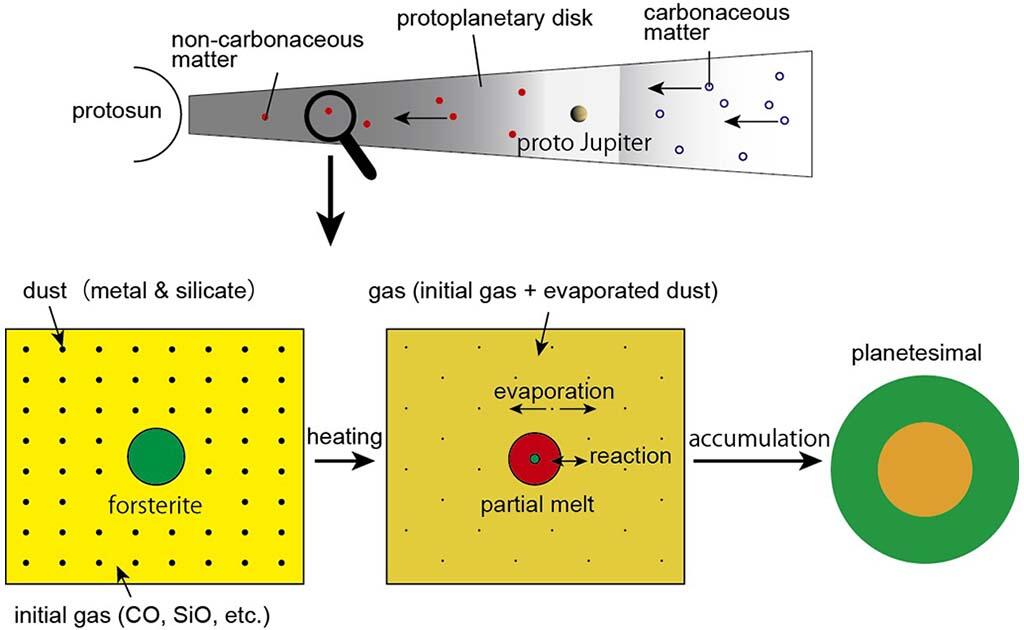Professor Ryoji Tanaka, Associate Professor Christian Potiszil, and Professor Eizo Nakamura, of the Institute for Planetary Materials at Okayama University, have succeeded in clarifying the evolutionary processes of the elements that constituted approximately 50% of the terrestrial planets in the primitive solar disc by performing an isotopic composition analysis of the oxygen and silicon in ureilite meteorites and the chondrules contained in enstatite chondrite meteorites.
Models using the various isotopic compositions of these elements in meteorites have been proposed to clarify the origin of terrestrial materials. However, the isotopic composition of oxygen and silicon, which account for almost half of the mass of the Earth, have not been consistently explained. In order to shed light on this, the researchers studied the materials that formed the terrestrial planets by analyzing the oxygen and silicon isotopes of ureilite meteorites and chondrules in enstatite chondrite meteorites, both of which are considered important materials for the formation of the terrestrial planets. Analysis showed that the ureilite meteorites had a broad oxygen isotope composition, while the silicon isotopes were homogeneous.

Credit: Institute of Planetary Materials, Okayama University
This indicates that approximately 100,000 years after the formation of the solar system, when ureilite meteorites began to aggregate, the silicon isotopes in the protoplanetary disk had already reached homogenization; however, oxygen isotope heterogeneity was still present. In contrast, the researchers also discovered that chondrules in enstatite chondrite meteorites exhibited a wide range of silicon isotopic compositions that corresponded with those of the Earth, Moon, Mars, and noncarbonaceous, asteroid-derived meteorites, and that showed gradual negative correlation with the oxygen isotopic composition.
According to Professor Tanaka, "Many of the chondrules weighed less than 1 mg. Therefore, we strived to develop a high-precision isotope analysis method for trace amounts of oxygen and silicon. This method will also be applied to the analysis of samples from the asteroid "Ryugu," which will begin in June. We want to elucidate the formation process of planets on which water and life exist by performing a multi-element isotope analysis for elements including hydrogen, carbon, and nitrogen in the Ryugu sample, which is expected to contain many organic substances and water."
- Enstatite chondrite meteorite: A type of primitive meteorite. It is named for its primary mineral, enstatite, which is a magnesium-rich pyroxene.
- Ureilite meteorite: A type of noncarbonaceous stony meteorite that is mainly composed of silicates and contains no chondrules.
- Chondrule: A spherical material found in primitive chondrite meteorites, formed through rapid heating and cooling.
This article has been translated by JST with permission from The Science News Ltd.(https://sci-news.co.jp/). Unauthorized reproduction of the article and photographs is prohibited.




